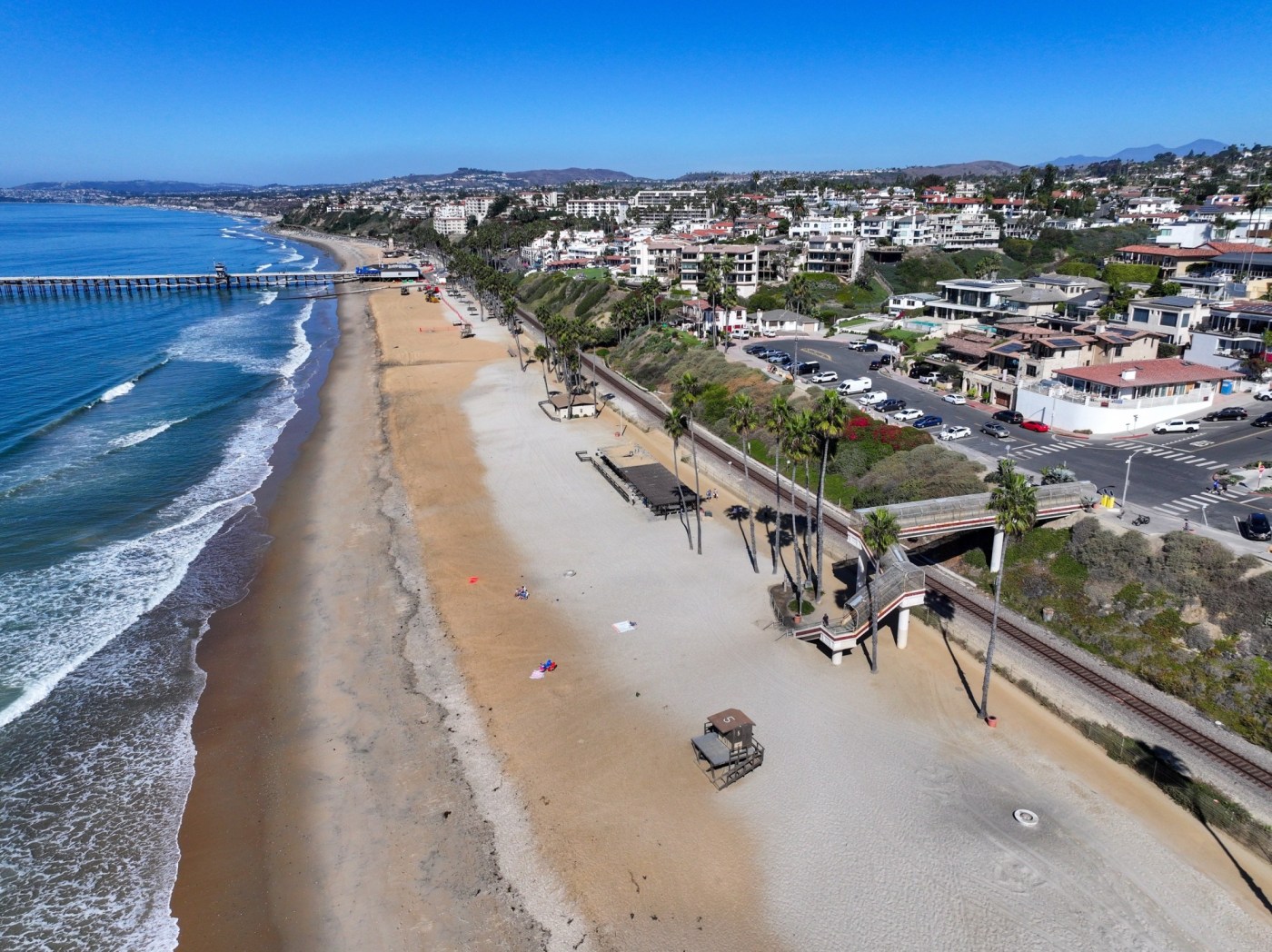Plans to work with U.S. Customs and Border Protection to monitor cameras along San Clemente’s shoreline are moving forward, San Clemente Mayor Steve Knoblock recently said.
Knoblock reported about ongoing research with the federal agency from the dais during the council’s last meeting, saying he and City Manager Andy Hall and some of the town’s technology staff have met with Border Patrol agents several times and most recently toured various locations from the pier south that could be suitable for camera placement.
There are at least five locations in the beach town where cameras could be used, he said. But because some areas cover a larger swath, not that many cameras may be necessary.
“They are excited about this,” Knoblock said about Border Patrol agents’ response to the proposed security partnership. “They are putting together their thoughts on the best technology.”
The idea to put cameras along the shore follows an effort by Knoblock earlier this year to address security concerns he has for the city’s beaches after several recent landings of illegal crafts. Just a week ago, he said a pleasure boat was observed coming ashore near North Beach. Once it landed, he said people were seen scrambling from it and were not located.
“It’s a real serious concern,” Knoblock said. “Our government’s No. 1 job is the protection and safety of our public, and our public is not being protected when we’ve got 14 illegal landings in the last six months on our beaches, not all of Southern California, but in San Clemente. That’s a problem for San Clemente. As the mayor of San Clemente, my focus is going to be the protection and well-being of our citizens.”
“I’m hoping my City Council colleagues share that sympathy,” he added.
If the plan for the shoreline cameras goes through, Knoblock said he believes the city would be the first coastal town in Orange County to have such a setup.
Once the review of the camera technology and costs is complete, Knoblock said he expects to bring the concept to the council for approval. While the cost is presently unknown, he said, the city will look for grant funding for the cameras or use city funds. Some private people have stepped up and offered to assist, he said.
In January, Knoblock proposed that the city buy infrared cameras that community members could operate as a way around SB 54, California’s so-called sanctuary state law, which limits local law enforcement’s ability to cooperate with federal immigration efforts.
But the idea of the community monitoring the cameras was not well-received by some residents and other council members, so Knoblock proposed collaborating with Border Patrol, which has offices and checkpoints south of the city along the 5 freeway.
Councilmembers asked Hall and city staff to speak with the federal agency about installing cameras to monitor the shoreline and look for any illegal activities, including people attempting to enter the country illegally.
With the Trump administration’s tightening of the border, Knoblock said he believes the landings will increase. Getting eyes on the water would be a way to curtail the illegal activity, he said.
“It’s a work in progress,” he said. “Part of the analysis,” he said of the April 14 field trip in town, “was what technology was needed and how to best man it.”
Once the cameras are up and running, Knoblock said they will not only be viewed by Border Patrol, but images would be available to other law enforcement and also the Maritime Coordination Center in Long Beach, which works with dozens of federal, state and local law enforcement agencies in a joint effort to keep the waters off California safe from smugglers and other criminals.
Bridgett Lewis, director of the MCC and security operations for the Port of Long Beach, said she is not surprised by the discussion of a partnership between San Clemente and Border Patrol, because the federal agency has always been interested in cooperating with coastal cities on border security issues.
Noting that Knoblock has put a focus on deterring illegal immigration efforts with the camera surveillance, Lewis said that the MCC can not assist with law enforcement detention of people who might be observed landing because SB54 prohibits any state or local entity from directly providing ICE with immigration enforcement.
The MCC, though, can utilize coastal surveillance systems to monitor for suspicious activities that indicate activity by transnational criminal organizations, human trafficking, drug smuggling or other criminal activity or terrorism threats, which fall under overall maritime coastal security.
She said that if partner agencies operating with the MCC saw something suspicious on the San Clemente cameras, they could act on it only if it was part of a concurrent investigation or if a crime was being committed unrelated to illegal immigration.
“The whole point of having these coordination centers is that information would go out to state and local partners and they can do the investigation,” she said.
“We won’t do the investigation. We can just tell you there is an event or suspicious activity,” she said. “We don’t know if it’s people or a single person bringing in a drug load; it’s just suspicious activity happening on the coastline, and we send someone there to check it out. If they get there and they make a determination that it is people, that particular agency, depending on where the incident is occurring, can make the appropriate notifications.”
Knoblock said he is very hopeful his colleagues will see the merit of his focus on public safety at the town’s beaches.
“The crimes are state, city, county and federal,” he said, referring to a host of issues beyond people illegally coming into the country. “Landing on our beaches is illegal, smuggling is illegal and not having safety gear on boats is illegal. And those impact our community. It’s a crime issue and it doesn’t automatically evoke SB54. It’s about keeping our community safe.”
